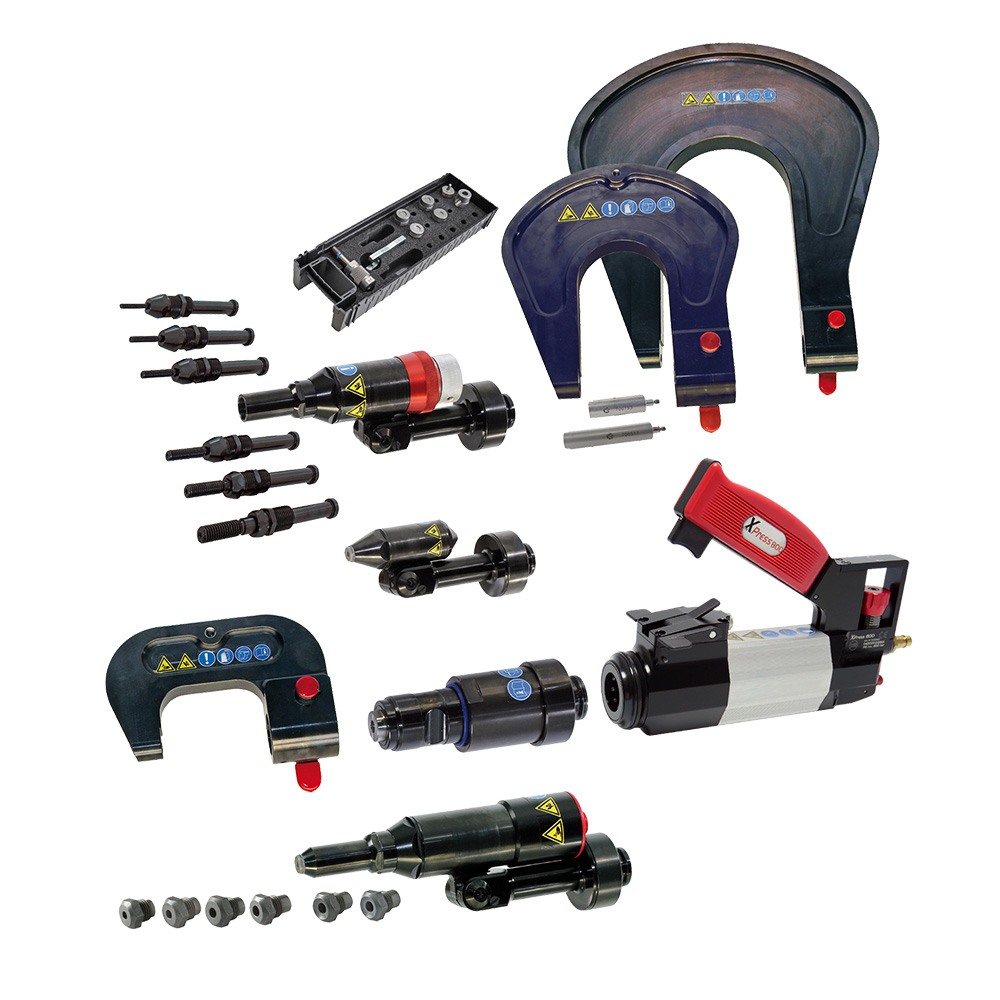

Researchers at Robert Bosch GmbH in Renningen, Germany, do not use heat, but rather vibration, to augment rivet installation. The brief, localized heat did not alter the mechanical properties of the base materials. The heating lowered the hardness of the materials and enabled piercing and penetration of the sheets to produce crack-free joints. In October 2020, they reported on a technique to briefly apply localized, one-sided, electric resistance heating to each fastening point prior to inserting the rivet. Researchers at the Austrian Institute of Technology in Vienna took a similar approach to riveting magnesium alloys which, like UHSS, have high strength but low ductility. By adjusting heating current, heating time and coil distance, the researchers were able to create crack-free joints having 78 percent higher undercut and 24 percent higher lap-shear strength than joints using the conventional SPR process alone. The researchers discovered that preheating the UHSS sheet made the tough material more amenable to riveting. The researchers used an induction coil and conventional SPR equipment to rivet sheets of AA6061-T6 aluminum and DP980 UHSS. In October 2019, researchers at Shanghai Jiao Tong University in China debuted another variant, thermally assisted SPR, designed to rivet ultrahigh strength steel (UHSS), a key material for lightweight automotive designs. So far, the researchers have tested their process using AA5754-H111 aluminum sheets and AISI 304 stainless steel tubular rivets. The rivets are hidden inside the cross section of the overlapped sheets. The new process maintains the advantages of conventional SPR and overcomes its main disadvantages: small protrusions above and below the sheet surfaces and difficulty in joining sheets of dissimilar materials with large thicknesses. The sheets are then pushed against each other by flat parallel punches, so the rivets are forced through the sheets and their ends are flared to create mechanical interlocking that holds the sheets tightly together. In their process, tubular rivets with simple geometry are placed in-between two sheets to be joined. In May 2020, for example, researchers from the University of Lisbon in Portugal unveiled their take on the technology: double-sided SPR. Many variations on the process are being introduced to broaden applications for the technology. A variety of head styles are available to meet functional or aesthetic requirements. They can also be made from austenitic or martensitic stainless steel, copper, or aluminum. Rivets are made from high-quality grades of steel wire that have been forged, hardened and tempered to provide optimum joint properties. Rivets can be supplied to the setting tool on tape or with a vibratory bowl and blow-feeding system. Riveters can also be mounted to a six-axis robot for fully automatic assembly.

Rivtex_MDS Equipment Brochure.pdf (3.Riveters are available as handheld tools (both corded and cordless) and as standalone pedestal systems. Process load monitoring can be incorporated into installation tooling system to track and notify operator of variances in joint. Self-sealing: rivet radially expands into material, without breaking through substrate. Provides consistent, high joint strength, comparable to spot welds and other mechanical fastening methods.Ĭlean assembly process - no fumes, sparks or swarf generated in joining process. No heat affected zone created in the assembly process. Pierce and fasten in one operation, eliminating need for insertion holes and alignment.


Please contact an Avdel application engineer for assistance.Įxcellent fastening system for joining dissimilar materials, pre-coated sheets or layered materials. Testing is required to determine proper rivet selection and die configuration as well as tooling for specific applications. Please note that optimal performance is dependent on material thickness and hardness. ø 5.3 mm, longer lengths, different heat treats. Materials: Steel, zinc plated & stainless steel.Ĭustomized fasteners can be produces on special request, e.g. This self-piercing rivet offers fastening without piercing through the back substrate. The Avdel Fastriv rivet allows dissimilar materials to be fastened easing automation and providing consistent, high joint strength, comparable to spot welds and other mechanical fastening methods.
#Self piercing rivet gun manual#
POP PNT110 Compact Professional Insert Manual tool Sheet Gripper / Clamp Kit (Cleco style).


 0 kommentar(er)
0 kommentar(er)
